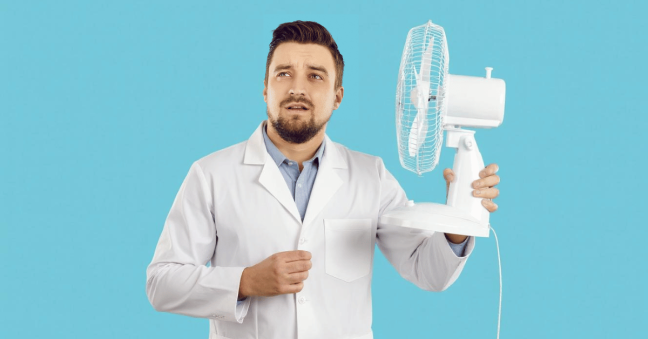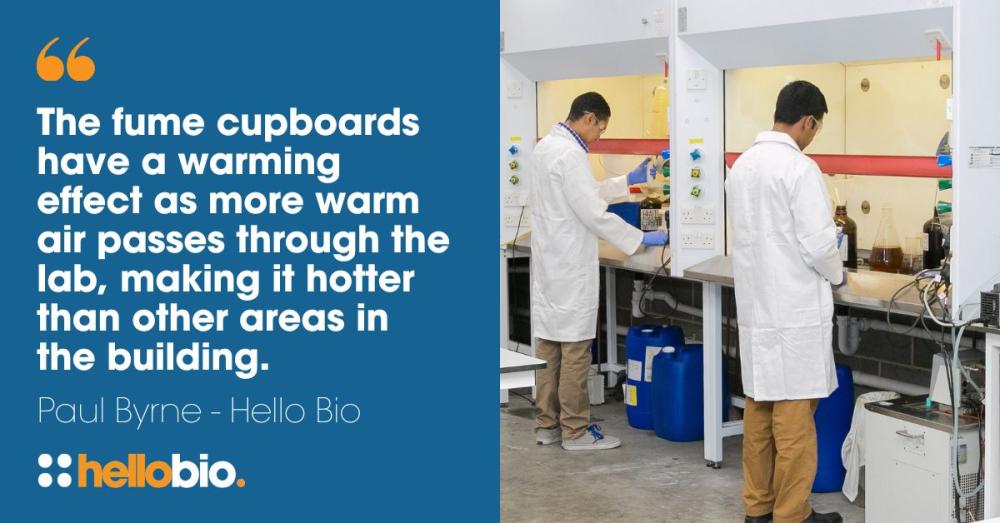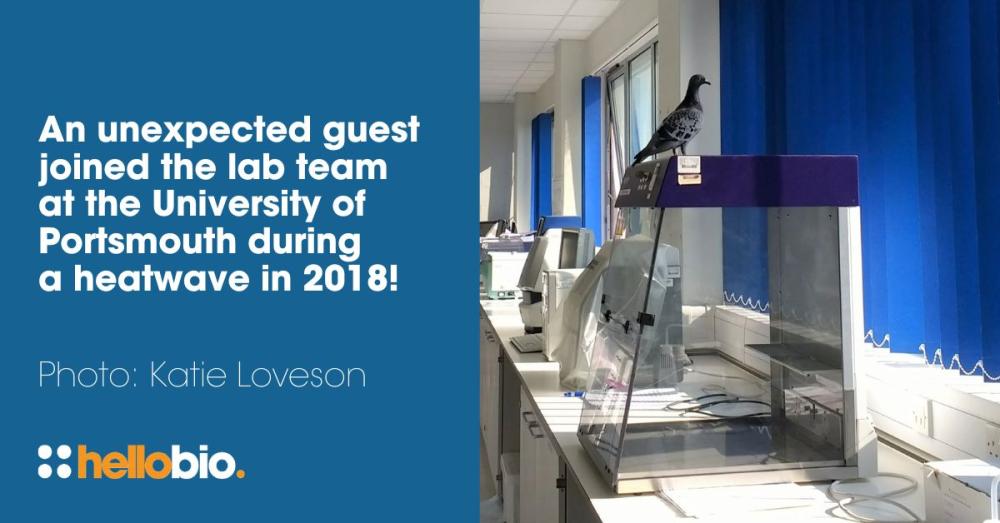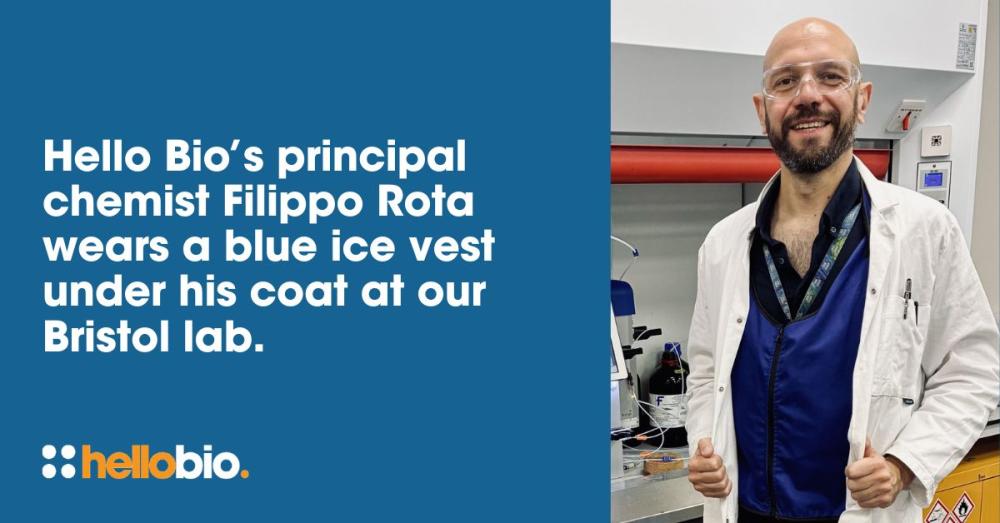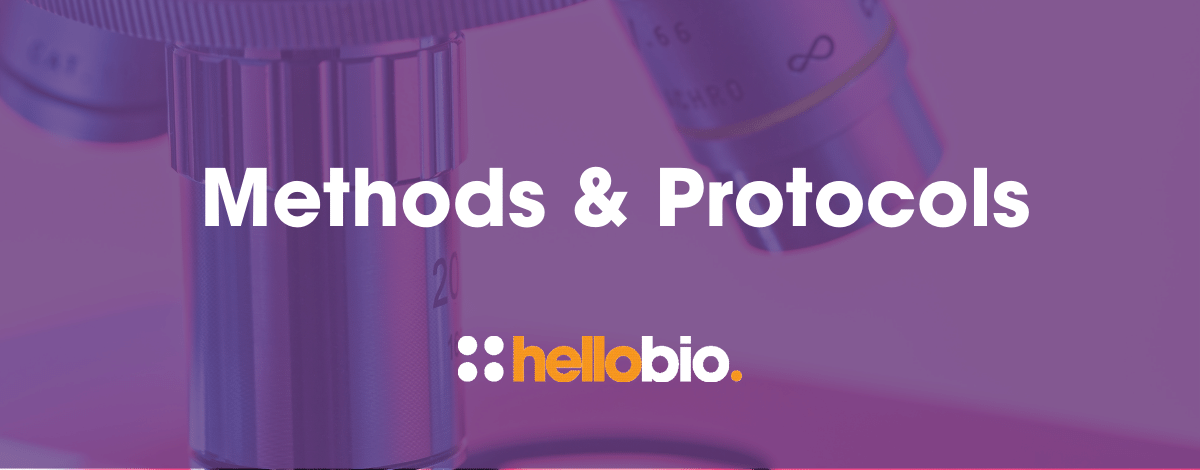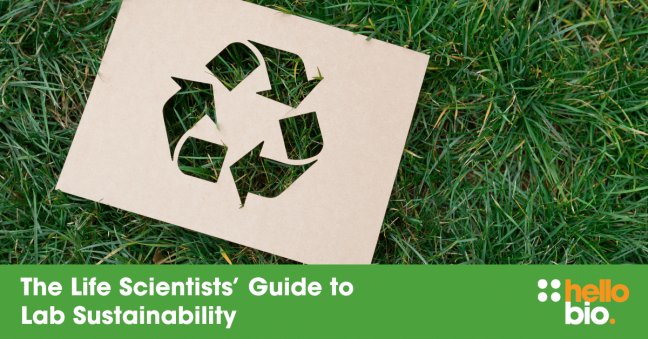Heatwave Hacks for Scientists: Staying Cool in the Lab
Summer might be the season of sunshine, ice cream, and long evenings in the park… but for scientists, it can also mean sweaty safety goggles, stifling PPE, and a desperate hunt for that one spot in the lab that’s slightly cooler than the rest.
While some workplaces keep things cool with a desk fan and an open window, scientists in busy labs face a whole range of unique challenges when temperatures start to rise. Fume hoods pump warm air around, high-powered equipment adds heat to any room, and opening a window isn’t always an option when your bench is covered in sensitive experiments. Add in the extra layers of gloves, coats, and other protective equipment, and things can get pretty sticky, pretty quickly!
So, how can scientists keep cool when things get tropical in the lab? In this article, we share some tried-and-tested hacks and suggest some alternative coping strategies to help scientists survive the heat this summer!
Why is science research such sweltering work?
It’s no secret that in recent years, global temperatures have been climbing, with heatwaves becoming more intense and wildfires more frequent across the world. Modern office-based work environments tend to be equipped with air con, and a relaxed approach to work attire is usually enough to keep employees cool and content. However, working in a busy science lab means being aware of health and safety issues, the need for air quality, and the impact that heat can have on both experiments and equipment. Add in the obligatory PPE, temperature-controlled conditions, and sensitive materials, and you’ve got a workplace where staying cool isn’t always as simple as turning up the AC.
PPE & restrictive clothing
In order to do their jobs properly, scientists are required to wear a certain amount of protective clothing and equipment, and will often need to keep much of their skin covered to protect themselves from exposure to chemicals. While safety must always be a priority, wearing nitrile or latex gloves, heavy cotton or polyester lab coats, and polycarbonate safety goggles is certainly not conducive to keeping cool.
Heat-generating equipment
Science labs are often filled with heavy-duty equipment and computers which use a lot of energy and in turn produce a lot of heat. Centrifuges, incubators, fridges, freezers, computer systems, and even high-powered microscopes can all add a few extra degrees to the air temperature in a confined lab space, making the environment uncomfortably warm to work in.
Paul Byrne, Head of Chemistry at Hello Bio’s UK labs, told us about the essential equipment that generates the most heat. He said: “The fume cupboards have a warming effect as more warm air passes through the lab, making it hotter than other areas in the building. Our stock room is probably the hottest room due to all of the fridges and freezers that are situated in a relatively small space.”
Controlled environments
In addition to these factors, the nature of science research often requires the work environment to be a controlled space, meaning an open window could cause complications. Temperature-controlled experiments require a stable environment, while other more sensitive experiments could be at risk from outside dust particle contamination or other biosafety issues.
While a little dust and some exhaust fumes aren’t ideal in any lab, even less desirable is a visit from local wildlife! Katie Loveson of the University of Portsmouth told us about an unexpected guest who joined her lab via an open window during a heatwave in 2018. She explains how a plucky pigeon popped in to help with her PhD work. She said: “I started in the lab early in the summer to stay cool, and on this particular day I was greeted by an unexpected feathered guest! Someone obviously forgot to close the windows after the extreme heat we’d had the day before. It is astounding how much mess a couple of pigeons can make in a nice clean lab!”
Get dressed for summer success
Despite the challenges, there are steps you can take to keep yourself cooler in the lab. Think carefully about how you dress in the lab, and consider making adjustments to your usual work wardrobe.
Choose a lighter lab coat
Where possible, choose lab coats made from lighter-weight and more breathable fabrics. Lab coats are generally measured in ‘ounces’ with 5 oz or less being considered ‘light weight’, 6-7 oz as ‘medium weight’ and 8-10 oz as ‘heavy duty’. Of course, the type of coat you need might be determined by the type of experiment you’re doing, eg. it should have specific levels of chemical or fire protection. For more information about the different type of lab coats and materials available, check out this great guide from Genius Lab Gear: geniuslabgear.com/blogs/for-scientists/lab-coat-materials-guide
Get into the habit of taking off your lab coat as soon as you step away from the bench and you know that it’s safe to do so. When you’re carrying out other tasks, give yourself (and your coat) the chance to cool off for a while.
Wear loose layers
If the type of coat you wear is non-negotiable, think about what you’re wearing underneath, and minimise the number of tight-fitting layers where you can. If possible, wear more breathable materials, but be sure to adhere to health and safety guidance and keep skin covered when necessary. Paul Byrne told us why shorts are a big no-no in the Hello Bio chemistry lab, even on the hottest of days. He said: “Wearing personal protective equipment (PPE) such as gloves, a cotton lab coat and safety specs can be rather uncomfortable during the heat of the summer. It’s physically demanding and can cause fatigue. However, as tempting as it is to dress down on hot days, we have to make sure we wear sensible clothes so that skin is not exposed - so definitely no shorts!”
Invest in an ice vest
Yes, you read that correctly - many scientists are choosing to wear ice jackets or cooling vests under their lab coats to keep cool on hot days, including the team at Hello Bio. Ice vests are designed with carefully positioned pockets that hold frozen cool packs to keep your body temperature down. Check out this great guide to some of the best vests on the market: pickreviews.co.uk/best/best-5-ice-vests-stay-cool-and-protected-in-extreme-heat/
Simple solutions to heatwave headaches
As well as choosing your lab attire carefully, here are a few more simple things you can try to keep you cool in the lab this summer:
Create a ‘heat-friendly’ work schedule
If possible, reschedule your tasks so that you tackle your most heat-sensitive or energy-intensive experiments earlier in the day before temperatures begin to rise. Save report-writing or equipment-ordering for the hottest parts of the day when you can set up your laptop at the desk nearest the air con!
Take breaks in cool spaces
When break time comes around, be sure to choose a cool space for your down time. Outdoors might not be the best option in a heatwave, so seek out any rooms in your building that have air con or better air flow where you can get some relief from the heat and reset your body.
Stay hydrated - and avoid caffeine!
Finally, it sounds obvious, but hydration can be overlooked when you’re busy with experiments. Keep a water bottle nearby, and consider investing in an insulated one that will stay cold all day. As much as you may love your regular coffee breaks, try to avoid too much caffeine on the warmest days as it will dehydrate you faster. Maybe treat yourself to a fancy brand of decaf coffee - or even an ice lolly - for those peak summer days!
If you’d like to find out more about saving energy in the lab and reducing your environmental footprint, check out these great articles on the Hello Bio blog:
- The Life Scientists’ Guide to Lab Sustainability
-
Simple Ways to Make Your Lab More Eco-Friendly - guest blog by Anne Vielle
-
To Sustainability and Beyond: Becoming a Green Lab Superhero - guest blog by Oisin C Joyce
_________________________________________________
If you enjoyed this article, why not check out the other resources available on our blog. We are passionate about supporting life scientists including early career life scientists and PhD students - with really low-priced reagents, antibodies and biochemicals, early career scientist grants, and resources to help with both personal and professional development. We know how tough it is - so we hope you find these helpful!
More General Support for Life Scientists
For advice on wellbeing, dissertations, presenting at conferences, wellbeing, PhD support, networking and lots more, we have a huge range of articles to help - just click below:
Save up to 50% on our high purity reagents...
When you get to the stage of planning your experiments, don't forget that we offer a range of low-cost, high-purity agonists, antagonists, inhibitors, activators, antibodies and fluorescent tools (yes - they really are around half the price of other suppliers!) You can use our Quick Multi-Search Tool to search for lots of products in one go, and the range includes:
- Enzyme inhibitors and activators
- Chemogenetic ligands
- Ion channel modulators
- GPCR & ionotropic receptor ligands
- Cell biology reagents & biochemicals
Technical resources
Try our Molarity Calculator: a quick and easy way to calculate the mass, volume or concentration required for making a solution.
Try our Dilution Calculator: an easy way to work out how to dilute stock solutions of known concentrations
We also offer a comprehensive range of technical resources including antibody protocols and methods, product guides and mini-reviews:
And finally, don't forget to check back in with our blog regularly for our latest articles. If there’s something you’d love to contribute to the community, whether that’s an interview or article, drop us a line at hello@hellobio.com
---





